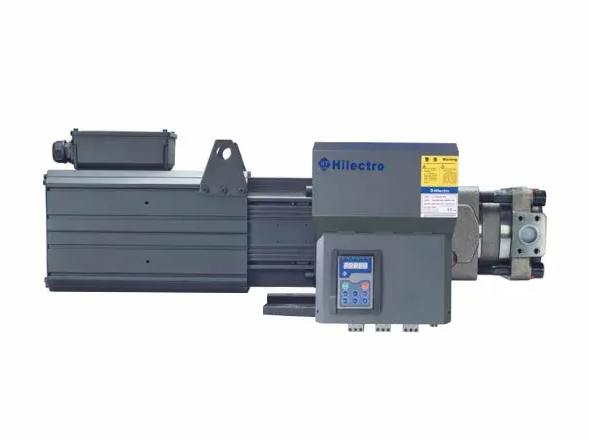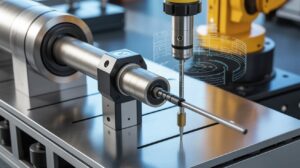Energy efficiency is the main key data in the industrial field today. Companies want to cut costs and carbon emissions. This was a significant step in the right direction, but the big breakthrough was servo-driven hydraulics.
Depending on the application, changing from hydraulic to servo-hydraulic technology for a hydraulic machine can save more than 50% of energy (kWh) per cycle. These systems blend the advantages of hydraulic servo systems. This will help with the sophistication of electric actuation technology. The result? It has the same high specs, but it uses much less power.
Introduction to Servo Hydraulic Drives
Hydraulic systems employ constant-speed pumps, which work nonstop even if the machine is not working. This causes excessive energy consumption. Then, there are servo-blown hydraulics, where the pumps have variable speeds. The pumps are servo-driven hydraulics, and the speed of these servo drives is varied according to the motor’s demand.
This method offers more control, and less power will be wasted. If the machine requires no force, the motor turns more slowly or even stops, greatly minimizing the overall energy demand.
Hydraulic presses are frequently used in a variety of forming operations in industrial applications because they have the advantages of a high power-to-mass ratio, high rigidity, and high load capability.
How Does a Hydraulic Servo System Work?
A servo drive controls the motor in a hydraulic servo system. The drive relies on feedback from sensors, which track variables such as pressure, position, and flow. The drive then adjusts the motor’s speed and torque accordingly.
Because of its closed-loop control system, it also enables high precision. It reduces wastage by only sending power when needed. A servo-controlled system can save 80% of energy compared to traditional systems.
Why Energy Efficiency Matters
An industry involves production with heavy machines. These machines use a tremendous amount of electricity. That not only reduces operating expenses but also helps sustainability as it cuts energy usage.
Industries can cut down on energy bills with hydraulic servo systems. The other thing they can do is be environmentally friendly. This becomes relevant in industries such as plastics, metal forming, and packaging.
Savings Beyond the Cash at the Electric Meter
The benefits of using servo-driven hydraulics extend beyond reduced electricity costs. They also lessen the requirement for cooling. Conventional systems are heat generators. Cooling systems must remove this heat, adding to energy utilization. By generating less heat, servo systems decrease the burden on cooling equipment.
The less wear and tear, the less maintenance is required. These systems run exceptionally smoothly with low vibration, prolonging the life of the hydraulic components and machinery.
Precision and Performance
An added benefit is improved precision and reproducibility. Finely controlled movement helps attain high precision for operations such as CNC machining or injection molding.
Quicker response times result in quicker production. Cycle times are better, with improved control. As a result, productivity is enhanced, and waste is reduced.
So once you consider upgrading to servo-controlled hydraulics, you need to choose wisely. An equally important aspect is selecting a trusted hydraulic servo system supplier. A good supplier like THM Huade assists with system design and integration and serves as a support system.
Real-World Applications
Most sectors are switching to the hydraulic servo method. For instance, in plastic injection molding, servo systems manipulate the clamping and injection process, leading to better product quality and less material wastage.
Firstly, servo-driven hydraulics deliver smoother motion in metal forming and other operations. They also help minimize noise and vibration. They offer clean, fast, and accurate processing in food and beverage packaging.
Many people think servo systems are a bit too complicated or expensive. But they last much longer, and the cost of energy savings usually pays for itself in one or two seasons. It also means easier maintenance due to fewer moving parts and smarter controls.
The long-term gains undoubtedly justify the upfront costs, especially with energy prices climbing.
Final Thoughts
The shift towards smarter, more efficient solutions is taking place across industries worldwide. In fact, one of the best paths to lower energy costs is to switch to servo-driven hydraulics. They provide precision, speed, and reliability. There are also savings in terms of carbon emissions and operational expenses.
Changing from standard hydraulic systems to hydraulic servo approaches is not only a fad. That is the long-overdue evolution required for sustainability. The advantages of energy savings cannot be ignored if you are upgrading the current machinery or constructing new operations.
Pairing technology with a dependable hydraulic servo system supplier provides businesses with a long-term return on investment in the form of performance, efficiency, and cost savings.
FAQs
How difficult is it to service a servo-proportional hydraulic system?
Not usually, maintenance is fairly easy. There is less wear and tear since the motor only activates when needed, fewer temperature components, and a more efficient system running. In addition, the majority of modern systems are equipped with diagnostic monitors to aid maintenance.
How do you select suppliers of hydraulic servo systems?
Find a hydraulic servo system supplier who has done business in your area of work. You can check for system design and training and also for the partner's support level. A decently cost-effective supplier will further assist you in summing up the expected savings and choosing the best of each class specific to your needs.



